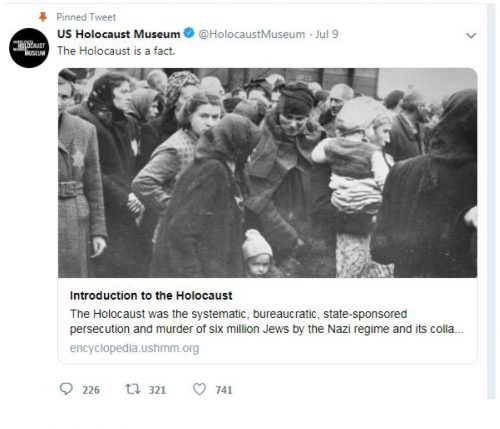Intern Weekly Response: Get Social

Every week we’re asking our summer interns to share some thoughts and responses to various experiences and readings. This week we asked them to explore the world of social media. To read more posts from JMM interns, past and present, click here.
~From Intern Elana: Instagram
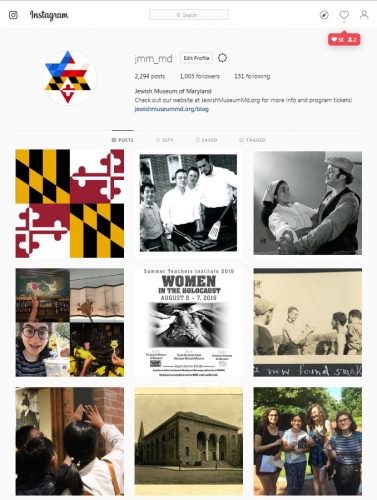
Let’s start with the things I really like about the JMM’s Instagram account. Firstly, I love how much we feature the collection and the different parts of the collection that we feature. Instagram is all about images and the aesthetic. When I scroll through a museum’s Instagram account, I want to see images of the museum, the things it has, and the things that happen in it, not a bunch of advertisements for programs that have long since passed or text posts of announcements. The main Instagram feed is not the best place for those sorts of posts. Generally, the JMM does a great job of maintaining this aesthetic. The photographs used are almost all extremely high quality and show an appealing image, whether it’s of an object, document, or event at the museum. I also really enjoy how the JMM uses “Throwback Thursday” and funny national holidays as an excuse to display the collections. It makes the posts more light-hearted and fun. Similarly, the tone used in the captions and the caption length are great. It is not overly professional or casual. The tone gives the impression that the JMM is simultaneously a place of learning and a fun place to go. The use of hashtags, especially in a place where they are hidden from the initial caption, is great. They allow the post to be seen by more people while not distracting from the primary caption. Lastly, the frequency with which the JMM posts on Instagram is great and helps the museum continuously connect with its followers.
Now, I’d like to move on to what I would like to see the JMM do on Instagram. Honestly, I really like what the JMM has been doing, so the changes would be fairly minimal. Firstly, I would delete posts of events that have passed. Though I do think Instagram is a good way to advertise programming, it might be best to do that within the Instagram stories feature or to delete the post once the event has passed. Because Instagram is all about image and aesthetic, it is best not fill up past feed with advertisements. I would also love to see the story and story highlight functions of Instagram used much more. The story function is not as great at capturing collections as the main feed, but it would be great to capture events in real time. Likewise, I think the story would be an effective way to promote blog posts. The story function allows you to link directly to a post so a viewer could read the post immediately. Then, the highlights feature could be used to show selected parts of past events on the JMM’s account page.
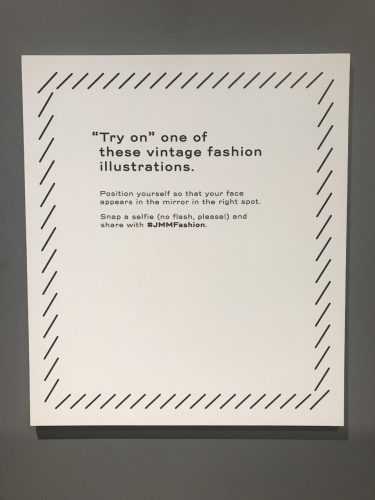
To conclude, I would like to suggest some museum Instagram accounts that I think are particularly interesting:
@metobjectsconservation (or metpaintingsconservation, metphotoconservation, textilesmet, etc.) – This account features the “activities of the Department of Objects Conservation at The Metropolitan Museum of Art.” Although this account has been less active lately, it illuminates the work that the typically “elusive” department is doing and allows the public access to what is happening to the objects that the Met holds.
@Smithsonian – This account is not for just one of the Smithsonian institutions, but for all of them. Thus, it features parts of all of the Smithsonian museums and institutions. I appreciate their posting frequency as well as the variety of parts of their collection that they show, from photographs to objects to archival pieces.
~From Intern Ariella: Tumblr
Fact: social media is important for museums.
If I had to condense all three articles we read this week, that would be the summary. Each of the articles discussed the implementation of social media platforms in museums. The museums that create an online presence range from huge institutions to smaller ones. They use the most popular platforms to engage their audience. Facebook, Instagram, and Twitter were the most commonly cited.
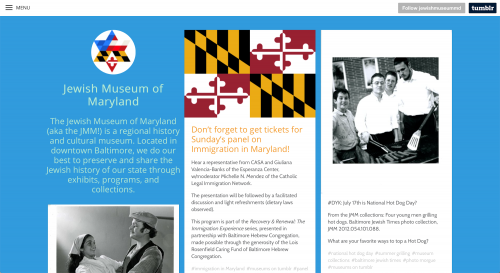
After doing some Googling around, though, I realized why that is. A lot of museums don’t bother to use Tumblr.
It’s hard to explain what Tumblr is, and I say that as someone who has vaguely browsed through various Tumblrs for at least five years. According to the organization itself, “Tumblr is a place to express yourself, discover yourself, and bond over the stuff you love.” According to Wikipedia, it is a “microblogging and social media website.” Basically, it can be whatever the designer wants it to be.
JMM takes that idea and expands it. Its Tumblr is a combination of elements: promotions for upcoming events, themed posts for each day or week, links to blog posts. It’s relatively easy to scroll through. A simple blue background keeps audiences from getting distracted, so the focus is on the posts. Pictures are accompanied by short blurbs, long enough to convey information without boring the reader.
Looking at the JMM’s account, I was impressed that Tumblr was able to be such a viable platform for the museum. It’s more versatile than Instagram or Twitter, and easier to focus on than a Facebook wall. JMM’s Tumblr formats blog posts in yellow, so they quickly catch the eye. It offers videos as well as pictures, making great visual content. It even lists staff emails when they relate to a particular post. All in all, JMM uses Tumblr to connect audiences to the museum, even while they’re remote and behind a screen.
It’s great that JMM is making the effort to use Tumblr, especially when so many other museums have left it behind. But there are some ways it can improve its presence on the site. Most simply, it should be easy to find the account — the Tumblr should be promoted on the JMM website. Both Facebook and Twitter are listed at the top of the webpage, but Tumblr is nowhere to be found. At the moment, visitors are more likely to stumble across the account than to intentionally search for it.
The actual Tumblr can be changed a bit as well. Perhaps a different background can replace the plain blue: a wall from the Lloyd Street Synagogue, for example. Tumblr urges museums to “build rapport with their local communities and amplify their audiences by marketing events, education programs, and more to other localities.” If that’s JMM’s goal, they’re doing a pretty good job.
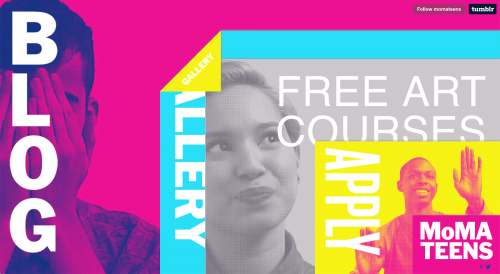
Another account to check out is Turning the Book Wheel. Run by the Smithsonian Libraries, the account is much simpler than MoMA’s. Posts highlight the collections held by the Smithsonian’s 21 libraries, often matching up with a theme for the day or month. It also includes a healthy dose of puns, which I will always welcome.
~From Intern Hannah: Tumblr
The Jewish Museum of Maryland’s Tumblr right now features a mixture of links to the Museum’s blog, photos from school group tours, and photos from our collection. Other museums tend to focus on items from their collections on their Tumblr and other social medias, so the inclusion of the school tours gives an emphasis on education, one of the main tenants of museums. This focus of visitor experience is really great, and stretches across all of the JMMs social medias. I love how the JMM’s social media has a large focus on the school and camp groups that come to learn at our museum. As an education intern, that is the Jewish Museum that I know so it’s great to see that same focus on education displayed for all of those who visit the JMM’s social medias. I also really enjoy the #DYK series that the JMM does, where they post a photo from their collection that correlates to a special holiday, like their ones for National Go Fishing Day and World Snake Day. I think that it adds some fun to the posts on top of just posting the great things we have in our collections.
I think that the way that the JMM’s social medias are set up now are great, they emphasize things that are important to the museum, such as our educational programs and staff blog posts. However, I think that it would be interesting to turn to how other museums are treating their social medias and think about diversifying the types of posts included.
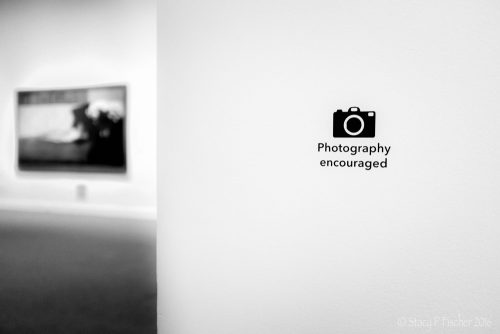
This opens up the conversation from just museum administration to the public, who are the ones that the museum is made for in the first place. The National Gallery of Denmark encourages visitors to take photos, with a sign in their lobby that reads “please take photos.” Although some museum professionals feel uncomfortable with the separation between human and exhibit when smartphones are added to the equation, I think that allowing visitors to interact with exhibits in a way that feels most natural to them makes for a more rewarding experience for them. Many museums, including the National Gallery of Denmark have set up exhibits and programs specifically for people to take photos of/with and share on social media. Whole museums dedicated to aesthetic and Instagram-ability is also a very large trend right now.
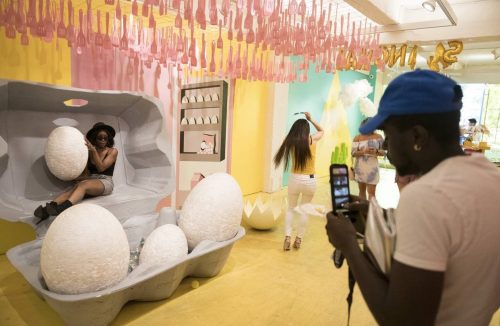
Increased social media interaction increases the amount of people who keep tabs on the museum and their social media, meaning hopefully more visits in the future. Museums are for everyone and I think that holistic experience should extend past your stay at the museum. Many museums are now encouraging their staff to post museum-related posts to their personal feeds, which I think is an interesting strategy, but should be up to personal discretion instead of the rule. Also, the JMM already puts a large emphasis on staff voices through its very active blog. I think that the longform format of Tumblr could be better utilized by the Museum. Social media platforms such as Instagram and Twitter benefit from short captions along with photos, while platforms such as Tumblr and Facebook allow for more lengthy posts and multiple photos. I think that the Museum could better utilize the format that each platform uses to better create interactions with the public, ensuring their following of the account and maybe their visit to the museum.
Two museum Tumblrs that I found that I enjoy a lot are the San Francisco Museum of Modern Art and the Jewish Museum of New York. Honorable Mention: Ashmolean Museum, which is University of Oxford’s Museum of Art and Archaeology.
~From Intern Mallory: Facebook

For museums, social media is an excellent way to connect with the community. We had to read three articles for this week, each of which are discussing museums and using social media. I found these to be very interesting as, while I consider social media to be a quick and easy way of keeping in touch with others, actually looking at the time and effort placed into some of the things posted is amazing, and those working behind social media have to be able to balance so many aspects and ideals all at once while still getting a message across.
JMM uses several different social media platforms. For this week I was looking into JMM’s presence on Facebook. Personally, while I have a Facebook I don’t use it a lot. Yet I know that Facebook is an excellent way to reach out to the community and to spread information.

I really like how, while there are daily posts, the posts span all aspects of the museum, not just the exhibits. The posts include events, education, archives, and even more. I really like this as it shows all sides of the museum, not just what the public sees at a visit. As it was said in an article we read for this week’s post, visitors “want to get a sense of how things are made. You want to build an audience before you have the big launch, rather than just sit on something and have it appear” (Keep the Conversation Going: How Museums Use Social Media to Engage the Public), the public wants to see behind the scenes. And JMM does an excellent job highlighting alternate aspects of the museum that visitors usually don’t interact with.
Out of JMM’s many posts, I enjoy the National Day posts the most. They provide not only a unique aspect of the museum and the collection but they also give a fun new bit of information for the day itself. I think that these days are very fun and engaging for everyone, for those already within the community and from outside the community.
For advice towards future posts on Facebook by JMM, personally, I don’t like clicking on links. I know that links can easily provide more information on a simple subject, but when I’m scrolling through social media in my free time I tend to stick to images and descriptions, rarely clicking on links. But, I do think that the mix of links on posts and images are an excellent way to grab attention, as they tend to be colorful and images draw the eye.
A few other museums that I looked at while working on this projects were the Smithsonian’s National Zoo and Conservation Biology Institute and the International Spy Museum. For the Smithsonian’s National Zoo and Conservation Biology Institute, something that really stood with me was how not only would they talk about events, they would post every time they welcomed a new animal to their facilities, which provides a warm sense of connection, introducing the animal by name and providing facts about the species. This created a family-like community connecting the zoo to all who interacts with it. For the International Spy Museum I really liked how they highlight the lives of various spies, talking about their training and achievements. I also like how they provide not only behind the scenes shots but also reposting articles about more current events that relate to their topics.
~From Intern Megan: Twitter
Today I am looking at JMM’s twitter page and discussing what I notice and what I like, including any further ideas I have.
I like how the museum is employing the use of text posts and images. Many twitter feeds either lack captions to photos or lack photos. I like how almost each post has both. I do not think I was necessarily surprised by any posts but I really enjoyed seeing the photos of people from years ago being identified. I think these types of posts caught my attention and probably do the same for others; they open one’s eyes to a piece of history and allow one to relate it back to themselves. In a way, these posts are glimpses of the exhibits at the museum because they are part of the stories that JMM is telling.
Another thing I noticed is that the page is very active. This shows the viewers that a lot is going on at JMM and there are certainly things to get involved in, even outside visiting and seeing the exhibits.

One other museum twitter page I recommend is MoMa’s. I recommend it because just like JMM they make good use of pictures and captions. Further, they use videos and gifs in their post to catch people’s attention. I think this is a good strategy.
